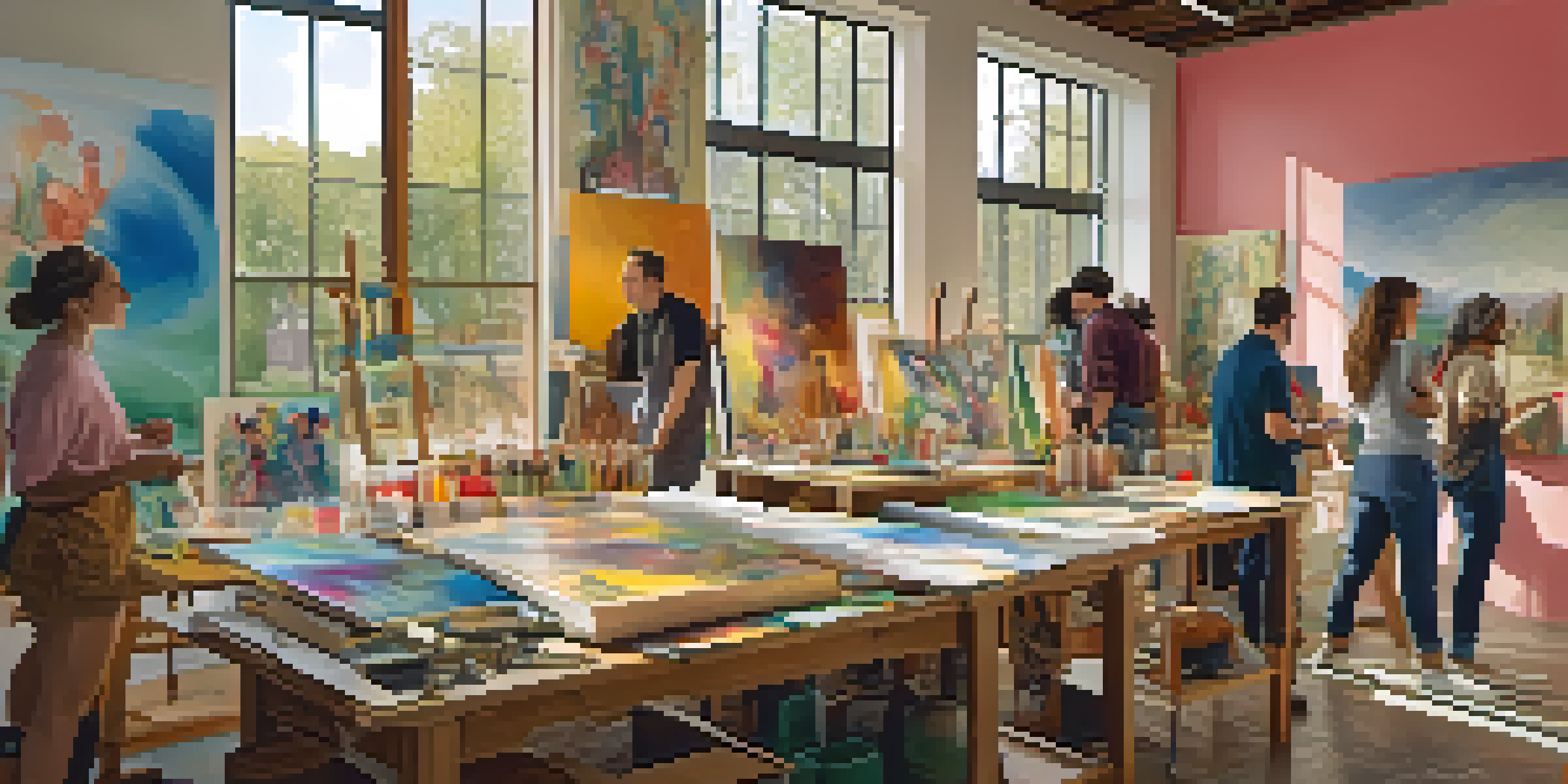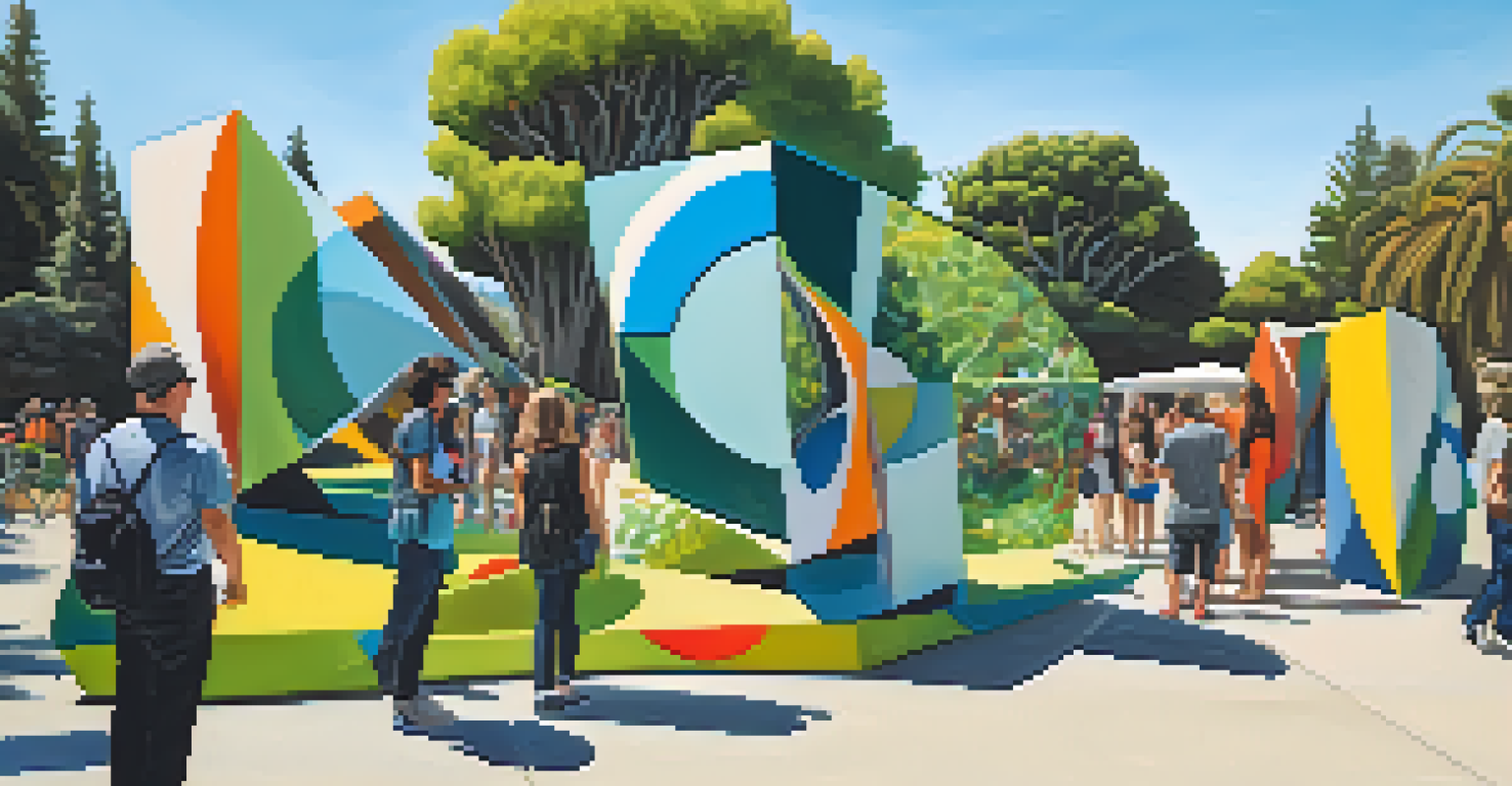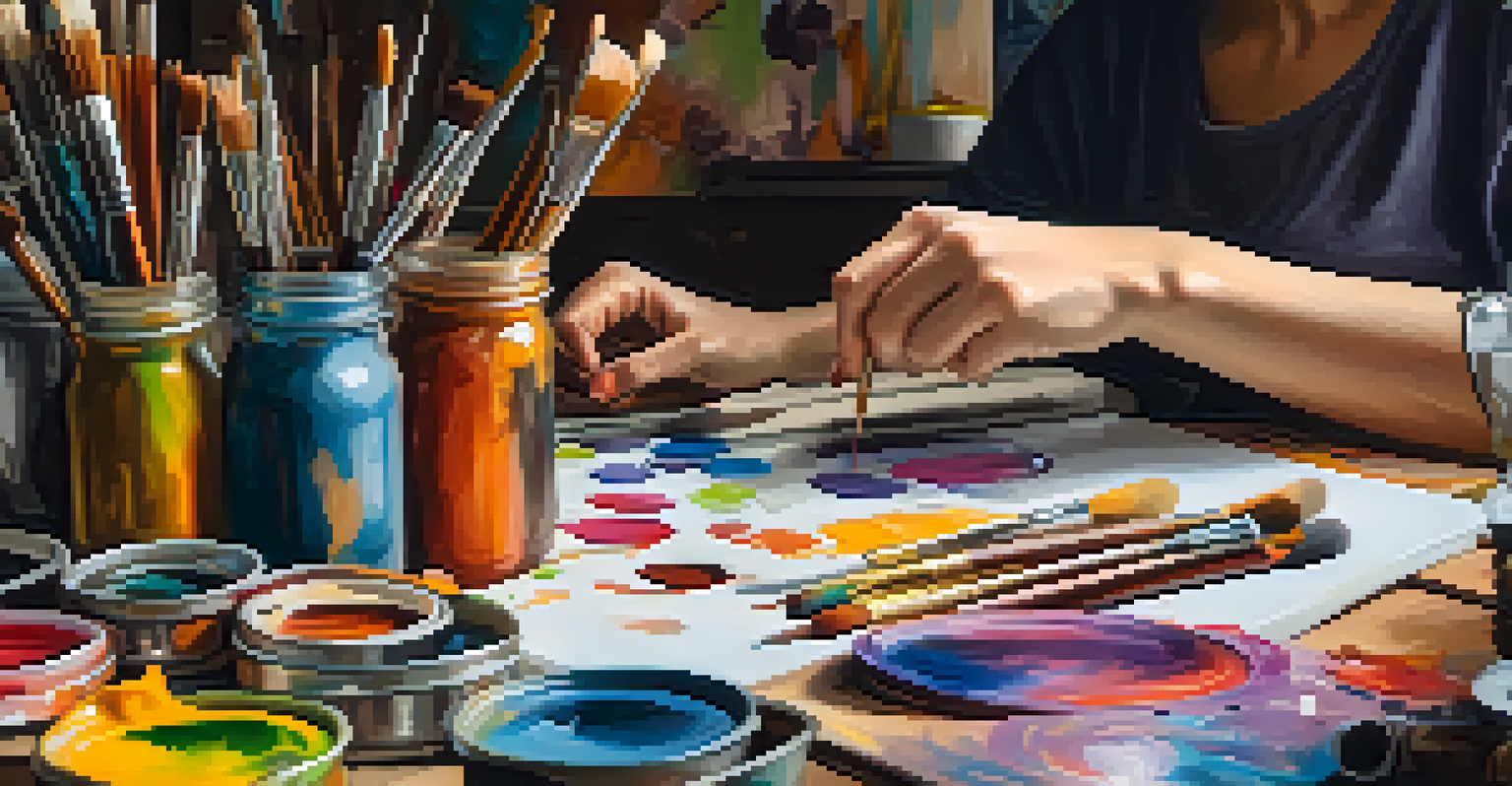Key Figures Behind California's Influential Art Collectives

The Birth of California's Art Scene in the 1960s
California's art scene began to flourish in the 1960s, fueled by a wave of creativity and experimentation. Artists were drawn to the state's diverse landscapes and progressive culture, creating a backdrop for innovative movements. This era saw the rise of influential collectives that encouraged collaboration and challenged traditional art forms.
Art is not a mirror held up to reality, but a hammer with which to shape it.
Many artists found inspiration in the social revolutions of the time, leading to a unique blend of political and artistic expression. Collectives like the Los Angeles-based 'The Factory' became hotbeds for groundbreaking projects that blurred the lines between art and activism. This environment fostered a sense of community among artists who shared a vision of redefining artistic boundaries.
Key figures from this period, such as Ed Kienholz and Judy Chicago, played critical roles in shaping the collective landscape. Their contributions not only influenced their contemporaries but also laid the groundwork for future generations of artists.
Ed Kienholz: Pioneer of Social Commentary in Art
Ed Kienholz was a pivotal figure in California's art movement, known for his provocative installations that tackled social issues. His work often reflected the darker sides of American life, addressing topics like war, poverty, and racism. Kienholz's installations were not merely visual displays; they were immersive experiences that compelled viewers to confront uncomfortable truths.

One of his most notable pieces, 'The Illegal Operation,' highlighted the struggles faced by women seeking abortions in a pre-Roe v. Wade America. This work exemplified how Kienholz used art to spark conversations about critical societal issues, making him a key player in the art collective scene. His ability to integrate narrative and physicality in his work inspired many artists to follow suit.
California's Art Scene Flourished
The 1960s marked the rise of California's art collectives, fostering creativity and social commentary through collaboration.
Kienholz's legacy continues to resonate, as contemporary artists draw on his themes of social critique and community engagement. His fearless approach to art paved the way for future collectives that prioritize activism and social justice.
Judy Chicago: Feminist Icon and Collective Leader
Judy Chicago is celebrated as a trailblazer in feminist art, and her work has significantly impacted California's art collectives. She co-founded the influential feminist art collective, 'The Woman’s Building,' in Los Angeles, which served as a space for women artists to create and exhibit their work. Chicago's commitment to elevating women's voices in the art world led to groundbreaking projects that challenged gender norms.
The role of the artist is to make the revolution irresistible.
Her iconic installation, 'The Dinner Party,' is a prime example of how Chicago combined art and activism to celebrate women's history. The piece features place settings for 39 notable women, sparking discussions about women's contributions to society and art. Chicago's work not only highlighted the achievements of women but also encouraged a new generation of female artists to pursue their passions.
Through her leadership in collectives and her influential artworks, Judy Chicago has become a symbol of empowerment in the art community. Her legacy inspires ongoing conversations about gender, identity, and representation in the arts.
The Impact of the California Institute of the Arts (CalArts)
The California Institute of the Arts (CalArts) has been a significant force in shaping the contemporary art landscape since its founding in 1961. The institute brought together diverse artists and disciplines, fostering an environment of collaboration and experimentation. Many influential artists emerged from CalArts, contributing to various art movements and collectives across the state.
CalArts encouraged students to push boundaries and explore new mediums, from traditional painting to performance art and digital installations. This emphasis on cross-disciplinary collaboration led to groundbreaking projects and the formation of collectives that challenged conventional artistic practices. The school's innovative spirit continues to influence the art community today.
Key Figures Shaped the Movement
Artists like Ed Kienholz and Judy Chicago played pivotal roles in redefining artistic boundaries and advocating for social issues.
Notable alumni, such as John Baldessari and Chris Burden, have made lasting impressions on the art world, often leading or participating in influential collectives. Their work exemplifies how CalArts has served as a nurturing ground for artistic experimentation and social engagement.
The Role of Chicano Art Collectives in California
Chicano art collectives emerged in California during the 1970s, providing a platform for Mexican-American artists to express their cultural identity and social issues. These collectives were instrumental in challenging stereotypes and advocating for civil rights through their art. By creating a distinct voice within the broader art scene, Chicano artists contributed significantly to the state's cultural landscape.
One prominent collective, 'Los Four,' showcased a group of artists who blended traditional Mexican themes with contemporary techniques. Their work not only celebrated their heritage but also addressed political issues affecting the Chicano community. This fusion of culture and activism resonated with audiences and paved the way for future movements.
The influence of Chicano art collectives can still be seen today as they continue to inspire new generations of artists. Their emphasis on cultural pride and social justice remains relevant in ongoing discussions about representation in the art world.
Emerging Collectives: The New Wave of California Artists
In recent years, a new wave of art collectives has emerged in California, reflecting the state’s ever-evolving cultural landscape. These collectives are often driven by younger artists who prioritize community engagement, inclusivity, and social change. They utilize innovative platforms and technologies to reach wider audiences, making art more accessible than ever before.
Collectives like 'The Underground Museum' in Los Angeles focus on promoting underrepresented artists and fostering dialogue around contemporary issues. By creating inclusive spaces for collaboration, these groups challenge traditional notions of what an art collective can be. Their work highlights the importance of community in the creative process.
Technology Transforms Art Collectives
The integration of technology has revolutionized how art collectives operate, enabling broader engagement and innovative projects.
As these emerging collectives continue to gain momentum, they redefine the art scene in California. Their fresh perspectives and commitment to social justice ensure that the legacy of collaboration and activism remains vibrant and relevant.
The Influence of Technology on California's Art Collectives
Technology has dramatically transformed the landscape of art collectives in California, opening new avenues for creativity and collaboration. Digital platforms allow artists to connect with each other and audiences worldwide, fostering a sense of community that transcends geographical boundaries. This shift has led to innovative projects that merge art with technology, such as virtual exhibitions and interactive installations.
Collectives are increasingly leveraging social media to promote their work and engage with audiences. Artists can share their creative processes in real-time, building a sense of transparency and connection with their followers. This democratization of art has empowered many emerging artists to showcase their talents without relying solely on traditional galleries.

As technology continues to evolve, so too will the ways in which collectives operate and collaborate. The fusion of art and technology promises to create exciting opportunities for artists and art lovers alike, ensuring that California's art scene remains dynamic and forward-thinking.
Looking Ahead: The Future of California's Art Collectives
As we look to the future, California's art collectives will undoubtedly continue to be at the forefront of cultural innovation. Emerging artists are likely to push boundaries further, exploring new themes and mediums that address contemporary issues. The growing emphasis on collaboration, inclusivity, and social justice will remain central to the mission of these collectives.
With the ongoing influence of technology, we can expect to see even more dynamic ways for artists to connect and create. Virtual exhibitions, online collaborations, and digital art forms will play significant roles in shaping the future of collective art practices. This evolution will allow for greater participation from diverse voices across the globe.
In essence, the legacy of California's art collectives will continue to inspire and challenge artists to engage with their communities. As they navigate the ever-changing landscape of art, these collectives will remain vital in promoting creativity, dialogue, and social change.